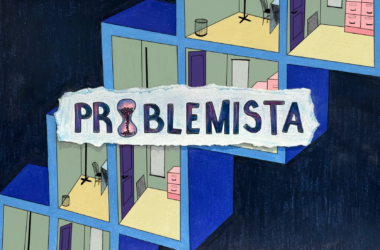Corridos Tumbados, a form of regional Mexican music, exploded in popularity in 2023. At the forefront of this phenomenon was Peso Pluma, who rose to global fame after his feature on Eslabon Armado’s “Ella Baila Sola,” which topped the Billboard Global 200 and was Rolling Stone’s song of the year. The global success of the song—as well as of hits such as “AMG” and “PRC”—propelled Peso Pluma to worldwide stardom, making him the most streamed artist on YouTube and the fifth-most streamed artist on Spotify in 2023. Peso Pluma, however, is just one part of a movement in Mexican music which has brought traditional sounds to millions of new ears.
Corridos Tumbados is loudly and proudly Mexican, making use of traditional instruments such as the Tololoche (bass) and Bajo Sexto (12-stringed guitar) as well as various brass instruments. However, the genre is also heavily influenced by American hip-hop, especially in lyrics and iconography. In the music video for “Dijeron Que No La Iba Lograr” (“They said I wouldn’t make it”), Fuerza Regida’s Jesus Ortiz Paz (JOP) and his 16-year-old protégé Chino Pacas flex chains and shoes to flaunt their success. The video for “PRC” by Natanael Cano and Peso Pluma features both artists dealing and preparing drugs, and the title is an acronym referring to cocaine, ecstasy, and methamphetamine.
Through rap’s aesthetics, Corridos Tumbados tells stories of the streets, crime, drugs, and success shown through flexing money, cars, and name brands. In terms of iconography, the artists’ clothing styles and music videos are often indistinguishable from those of American rap. Contrasted with traditional sounds of Mexico’s rural music, rooted in the centuries-old corrido tradition, these modern motifs create soundscapes of struggle and adversity. Corridos Tumbados bridges today’s most influential themes and iconography so that traditional Mexican music canspeak to a new generation of listeners.
A defining feature of Corridos Tumbados is its ability to transcend the U.S.-Mexico border. Many of the most popular artists of the genre are American, such as Fuerza Regida, Eslabon Armado, and DannyLux. Peso Pluma went to high school in Texas and worked as a construction worker in Los Angeles before his fame, and Natanael Cano moved to Los Angeles at 17 after being signed to the influential label Rancho Humilde. The label’s owner, Mexican-American Jimmy Humilde, deserves significant credit for the emergence of Corridos Tumbados.
In a 2020 interview with Forbes, Humilde described the genre as “the streets of the U.S. and Mexico put together. I’m talking about the grimiest, the ghetto-est, the lowest-income neighborhood that there is.” He emphasized the importance of Mexican-Americans’ exposure to Black culture to the development of the genre. It was Rancho Humilde’s Natanael Cano who coined the term Corridos Tumbados, after his 2019 album of the same name. The pioneering role of Rancho Humilde and Mexican-Americans as a whole has created a genre that centres Los Angeles rather than Mexico City. Despite deep American ties, Corridos Tumbados is proudly Mexican; Peso Pluma has taken to displaying Mexican flags and shouting “Viva Mexico!” at concerts to wild adulation.
Corridos Tumbados is a beautiful mess of contradictions: It’s both traditional and modern, proudly Mexican but with significant American influence. It shows how identity can be conveyed through music and how genres and cultures can borrow from each other while conserving their own identities. And, most importantly, it sounds good. In a genre that uses real instruments and vocal talent, the musicians tell everyday stories with everything from songs of love and heartbreak to crime, struggle, and success. The worldwide success of Corridos Tumbados shows that traditional music can survive and thrive in the 21st century as a powerful expression of identity while adapting to modern themes and influences.









